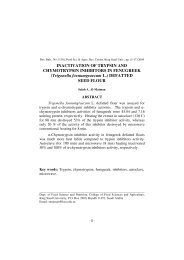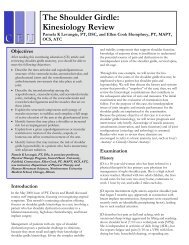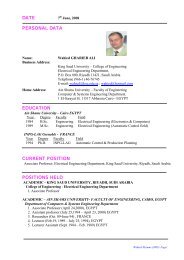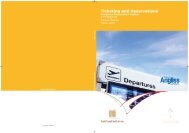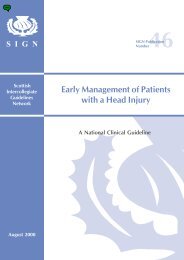Common insect pests in Saudi Arabia (for example) are ... - Colleges
Common insect pests in Saudi Arabia (for example) are ... - Colleges
Common insect pests in Saudi Arabia (for example) are ... - Colleges
You also want an ePaper? Increase the reach of your titles
YUMPU automatically turns print PDFs into web optimized ePapers that Google loves.
<strong>Common</strong> <strong><strong>in</strong>sect</strong> <strong>pests</strong> <strong>in</strong> <strong>Saudi</strong> <strong>Arabia</strong> (<strong>for</strong> <strong>example</strong>) <strong>are</strong>:<br />
1- Desert Locust Schistocerca gregaria<br />
2- American Cockroach Periplaneta americana<br />
3- Cyclops Termites Psammotermes hybostoma<br />
4- Check Capsid Deraeocoris pallens<br />
5- Green Plant Bugs Nezara viridula<br />
6- Bed Bugs Cimex lectularius<br />
7- Bleached Ground Bug Dieuches mucronatus<br />
8- Western Death's-Head Hawk moth Acherontia atropos<br />
9- Convolvulus Hawk moth Agrius convolvuli<br />
10- Oleander Hawk moth Daphnis nerii<br />
11- Dark Clover Heliothis armigera<br />
12- Okra Pea Moth Earias vittella<br />
13- Citrus Swallowtail Papilio demoleus<br />
14- House Fly Musca domestica<br />
15- Two-toned Horsefly Tabanus rup<strong>in</strong>ae<br />
16- Gra<strong>in</strong> Weevil Sitophilus granaries<br />
17- Elegant Ground Weevil Bothnoderes anxius<br />
18- Gaudy Carpet Beetle Anthrenus flavipes<br />
19- Larder Beetle Dermestes lardarius<br />
20- Date-Palm Weevil Rhyncophorus ferrug<strong>in</strong>eus<br />
The latter pest <strong>are</strong> most destructive of the date palm that threaten its existence;<br />
mostly borers either <strong>in</strong> the trunk of the palm,<br />
The Red Palm Weevil Rhynchophorus ferrug<strong>in</strong>eus (family Curculionidae)<br />
As is well known, this pest is a newcomer to the region. Its occurrence <strong>in</strong> UAE<br />
was discovered <strong>in</strong> 1985; from then it spread, <strong>in</strong> the same way <strong>in</strong> plant<strong>in</strong>g<br />
material imported from the Indian Subcont<strong>in</strong>ent, to all other Gulf Region<br />
countries and then to Egypt and Jordan, to become a most important pest of the<br />
century. Its importance lies <strong>in</strong> be<strong>in</strong>g a fast killer to the palm, unlike the<br />
cerambycid trunk borer which is a very slow killer; un-noticed to a layperson.
The adult weevil measures about 40mm <strong>in</strong> length, with an about 10mm long<br />
snout; the male is a little smaller than the female; otherwise there <strong>are</strong> no<br />
morphological differences (dimorphism) between the two sexes, except <strong>for</strong> a<br />
narrow strip of red hairs on the dorsal surface of the male snout (a beard <strong>in</strong><br />
reverse).<br />
The larva is the trunk borer and the damag<strong>in</strong>g stage of the weevil. When<br />
hatched, it starts burrow<strong>in</strong>g on the site of the wound on which the eggs <strong>are</strong> laid;<br />
then it gradually enters <strong>in</strong>to the palm’s trunk, digg<strong>in</strong>g upwards <strong>in</strong>tricate<br />
tunnels, feed<strong>in</strong>g on the sap <strong>for</strong> 2-3 months. Upon completion of its<br />
development the larva directs its tunnell<strong>in</strong>g towards the surface of the palm<br />
trunk till it reaches a base of a frond; there it collects the fibrous strands to<br />
wrap them around itself; build<strong>in</strong>g the pupation cocoon. An effective method of<br />
control is to remove all the fibrous strands from the palm.<br />
Control there is a number of, methods; no chemicals <strong>are</strong> <strong>in</strong>volved <strong>in</strong> any of<br />
them -<br />
Early detection of <strong>in</strong>festation <strong>in</strong> a palm and then per<strong>for</strong>m<strong>in</strong>g surgery to remove<br />
the eroded tissue of the palm at the site of entry of the larvae <strong>in</strong>to the trunk<br />
together with all development stages of the weevil, which <strong>are</strong> mostly larvae.<br />
Alum<strong>in</strong>ium phosphide tablets <strong>are</strong> placed <strong>in</strong> the result<strong>in</strong>g open<strong>in</strong>g, usually at the<br />
base of the trunk and then the open<strong>in</strong>g is tightly closed. This is the most<br />
important method of control.<br />
Proper use of the pheromone trap; the traps at present <strong>are</strong> not properly used and<br />
they <strong>are</strong> do<strong>in</strong>g some damage themselves.<br />
Control of the rh<strong>in</strong>oceros beetles, especially Oryctes agamemnon, because<br />
they cause wounds, which pave the way <strong>for</strong> the entry of the weevil <strong>in</strong>to the<br />
palm trunk.<br />
Best of all is to prevent the <strong>in</strong>festation from tak<strong>in</strong>g place; here a good extension<br />
service is vital, not <strong>for</strong> this pest but <strong>for</strong> all <strong>pests</strong> and <strong>for</strong> all cultural operations.



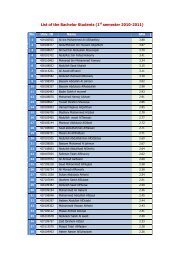
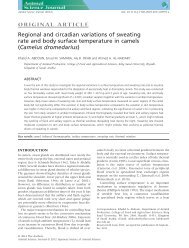
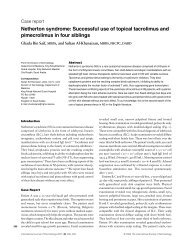
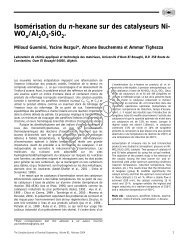
![التجربية الأولي [Read-Only] - KSU](https://img.yumpu.com/15502211/1/190x135/-read-only-ksu.jpg?quality=85)

